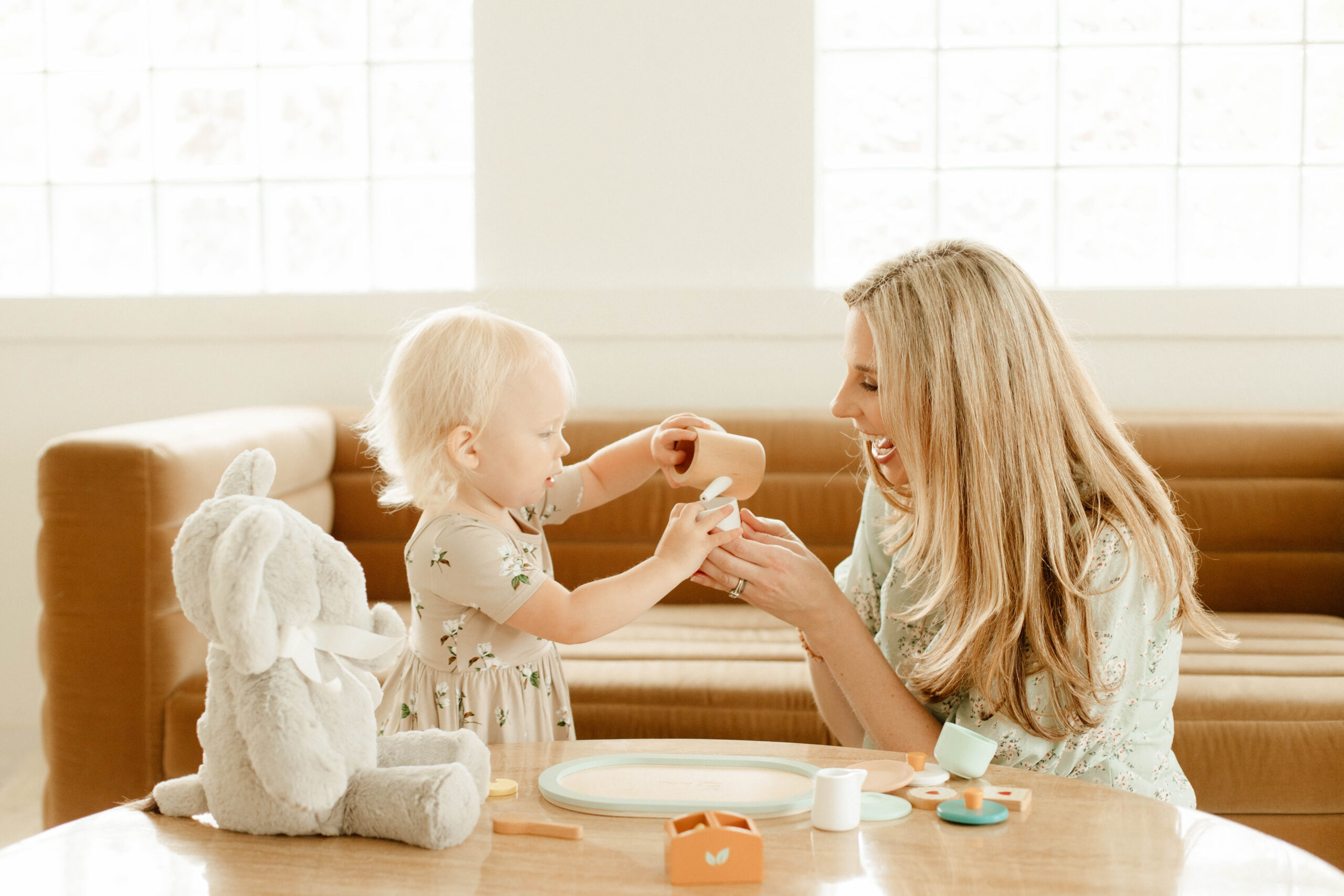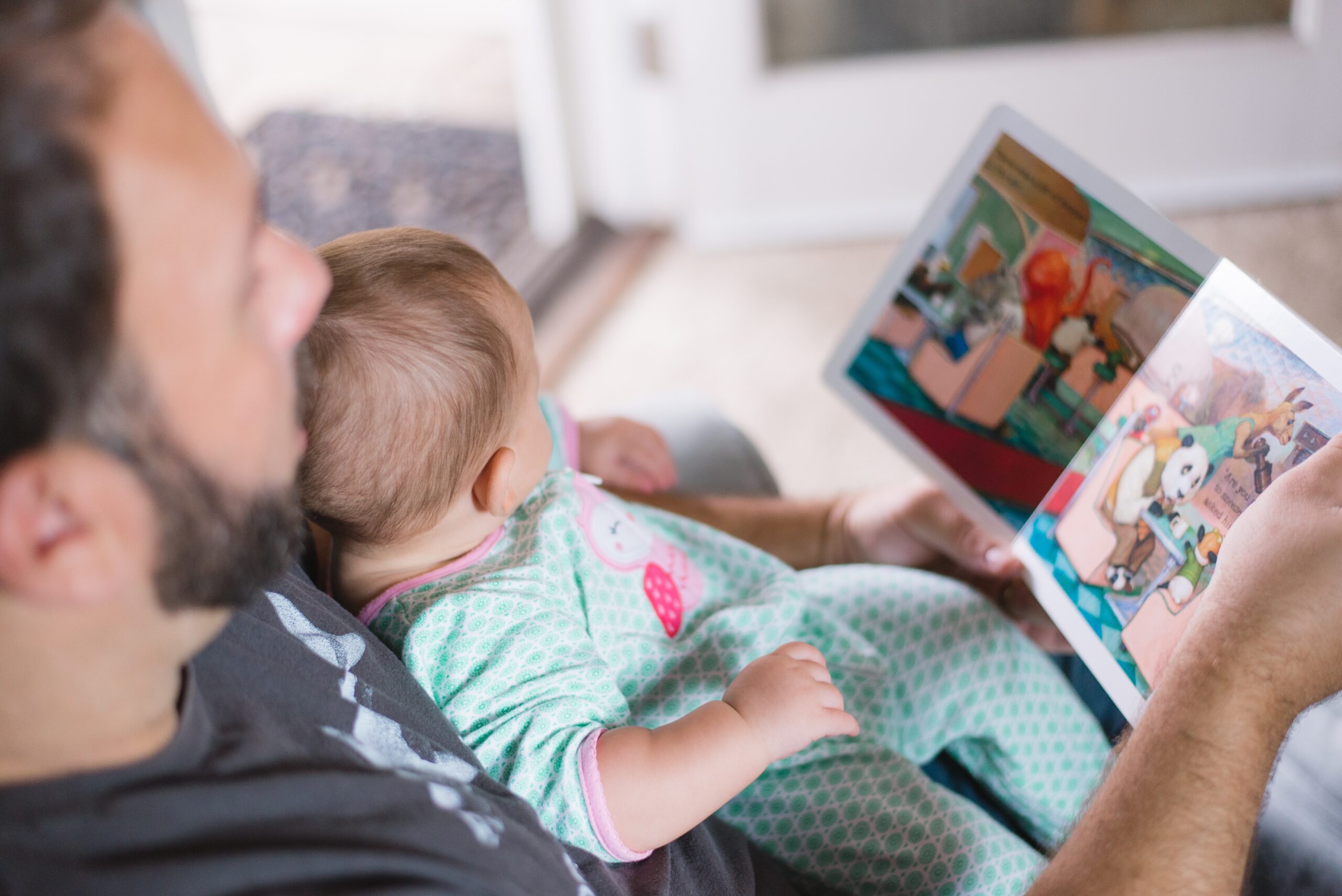
Gestures support speech development:
You may have heard about the benefits of signing with your little one. Here are just a few:
Gestures produced at 16 months were correlated with spoken vocabulary at 20 months (Capirci et al, 1996)
Children who have more gestures for objects tend to meet their first 10 word milestone sooner (Acredolo & Goodwyn, 1998).
Babies in families who here encouraged to teach their babies signs were more advanced in their language skills, intelligence skills, and play skills when tested. (Acredolo & Goodwyn, 1998).
Babies who had been taught signs knew on average about 50 more spoken words at the age of two than families who hadn’t! (Acredolo & Goodwyn, 1998).
Signs aren’t meant to be a substitute for words, but rather to be a bridge that helps your little one express their thoughts and ideas, communicate more, and decrease frustration.
But does it have to be the sign?
You may be wondering-What if my child has their own made up signs? Is that still helpful? The answer is yes! Here’s why:
Gestures decrease frustration: help your little one say with their hands what their mouth isn’t saying just yet and this helps so much with decreasing frustration!
Gestures make your words visual: This makes it easier for your little one to learn new words. It also makes specific words stand out, which can encourage your toddler to copy the word
Gestures come before words: Gestures pave the way for speech development. There is even research that shows that once a child produces a gesture for an object, they will typically say that word within 3 months.
Gestures give your child a way to communicate about more and in turn, hear more words. For example, if you little one makes a gesture or sign for flower, it’s natural for us to talk about that flower. Your toddler gets to hear more of the language associated with exactly what they are interested in at that moment (so powerful!)
It’s gestures in general that are so beneficial.
So what’s the difference between home signs and baby signs?
Home signs are signs specific to your child and your home. Your child may make up their own gesture for a word. For example, my daughter makes her hands into a sprinkler when she wants to tell us about it.
Baby signs aren’t exactly the same as the signs the Deaf community uses, because true ASL has a grammar system and more abstract words, but baby signs are generally universal, meaning they are always the same.
Between 9-12 months, Infants begin using gestures known as gestures such as showing, giving, and pointing to intentionally communicate with others. These are called deictic gestures. The end of your baby’s first year marks the onset of symbolic gestures. These gestures are used to represent something such as acting like a puppy dog when talking about a dog.
The advantage of baby signs is that someone who doesn’t know your child may not know what their gesture means. For example, my daughter’s babysitter asked what it meant when she taps on her head and I shared that means she heard a loud noise. Both home signs and baby signs are helpful, but make sure share what your child’s gestures mean when spending time with caregivers so they don’t have to guess.
Using gestures with your toddler
Research has shown that increasing parents’ use of gestures paired with speech results in receptive and expressive language gains for their children – and this has been shown with both typical children and children with expressive language delay
Here are some ways to use gestures to support your toddler’s speech development at home:
- Make your hands match your mouth! This will help make your words visual and stand out to your child
- Copy their child’s gesture and add a word so if your little one makes their arms big, do that too and then say something like, “A big dog!”
- Interpret your child’s gestures by saying the words that matches what they are trying to tell you with gestures such as pointing, showing giving, and symbolic gestures.
Takeaway: Gestures and signs support speech development, help decrease frustration, and give your child a way to communicate more as they are gaining confidence with talking. You can help support your toddler’s speech development at home by honoring however your child is communicating (gestures, pointing, grunts, etc.) and giving them the words that match what they are trying to say.
I’m worried about my toddler’s speech development, What else can I do?
There is so much you can do at home to support your toddler’s speech development. Research shows that when parents learn strategies to help their late talking toddler, it is as effective—if not more effective—than when speech therapists deliver the therapy! (1)
Want to learn exactly how to help your toddler say more? My Big Little Talkers course is for parents of late-talkers will show you step by step how to help expand your toddler’s vocabulary, decrease frustration and get off to the best possible start with speech and language development.
References:
Arcredolo, L., & S. Goodwyn. Baby Signs. Chicago: Contemporary Books, 1998.
Capone, N. C. & McGregor, K. K. (2005). The effect of semantic representation of toddlers’ word retrieval. Journal of Speech-Language-Hearing Research, 48(6), 1468-1480.
Goldin-Meadow, S. (2015). Gesture as a window onto communicative abilities: Implications for diagnosis and intervention. Perspectives on Language Learning and Education, 22, 50-60.
Roberts, M., & Kaiser, A. (2011). The Effectiveness of Parent-Implemented Language Intervention: A Meta-Analysis. American Journal of Speech-Language Pathology, 20, 180-199






